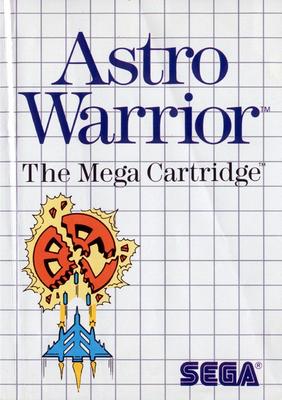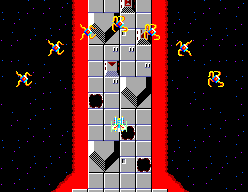At the 2005 Game Developers Conference luminary Will Wright of Maxis
Software amazed attendees with his seminar, “The Future of Content.” He
began simply, outlining for his audience the trials and travails of
developing content for an increasingly high-definition medium. No one
could have been surprised when he supported his arguments with
experiences from his widely successful titles SimCity and The Sims;
no one should have been surprised that his content strategies were being
prototyped for a new game; but no one could have been prepared for
Spore, or for the scope of the demonstration that promised an
ever-growing, seemingly boundless galaxy filled with content birthed
from players themselves.
From his perspective in the gaming industry, Wright had seen development
budgets explode. Creating content to fill increasingly higher-fidelity
worlds was getting more expensive every day; and though a developer
might spend twice as much to create HD-ready models and textures, that
expense carries a diminishing return in value for the player.
At the same time, Wright had noticed that some of his most engaging
gaming experiences had little to do with anything the developer had
defined beforehand. This had always been true of Maxis’s own games; but,
with the advent of the Grand Theft Auto series and the era of sandbox
gaming it had inspired, more and more players were creating their own
stories in these virtual worlds. More importantly, these were the
stories that players related to each other, often ignoring the story
that had been written for them by the developer.
It seemed a perfect fit: on one side, an industry struggling to keep up
with the cost of creation; on the other, an ever-growing mass of players
eager to create. So Maxis created Spore: a set of intuitive content
creation editors that would bring players and developers closer
together, amplifying the player’s own creative abilities with
procedurally generated models, textures, and animation.
Wright aimed beyond simply equipping players to create: Spore needed to
inspire that creation as well. Inspiration comes from the context of the
world we’re placed in, and the scope of what Wright had in mind was more
than anyone present in the conference hall could have anticipated. With
brief diversions into the philosophies of creation, play, and Care
Bears, he unfolded Spore’s world. A single-celled organism grew to
inhabit an ocean. He added legs to his creatures and they crawled onto
dry land. Given tools, they formed tribes and built cities. Their
starship carried them to other planets orbiting the sun and, then, to
other stars, each with its own unique planets, cities, and creatures.
Each iterative expansion of scope was met with another round of amazed
applause.
This presentation was my first exposure to Spore, separated though I was
from the event by a layer of Google Video. I was awestruck by the game’s
depth: it seemed to be a world without end! As the player I would be
able to create creatures, vehicles, tanks–entire planets! I could
explore every drop of water at microscopic detail, or fly across an
entire galaxy; and, thanks to Spore’s content distribution network, each
new corner of that galaxy would be full of unique content created by
other players.
Which is to say: I bought into the hype.
When Spore was released three years later, it seemed a shallow
reflection of what had been on display at GDC. The creature editors were
still intuitive and the galaxy was still near-infinite, but the magic of
watching the game unfold was missing. I had imagined a world with depth
to match the amazing breadth on display; but Spore lacked the essential
details that make virtual worlds feel alive. The final game was, in
fact, even shallower than what had been shown before. Exciting features
like emergent abilities and behaviors, procedural verbs, sea creatures,
and underwater civilizations were conspicuously missing. Creature
evolution, originally rooted in iterative experimentation with the
emergent properties of the game engine, was replaced with a linear tech
tree of parts. Social interaction, once experimental and unpredictable,
now amounted to little more than a repetitive game of “Simon Says”
powered by static bonuses granted explicitly by parts purchased in the
editor. Military conquest and religious proselytization were nearly
indistinguishable, both playing out as a tank parked outside a city,
shooting missiles (or is it music?) at an opposing population.
But what if my disappointment with Spore was simply the product of my
own unrealistic expectations? The game I had imagined was the perfect
fulfillment of every pipe dream that 2005 Will Wright had for it, but
reality rarely matches up with such high expectations. Perhaps now,
another three years divorced from the romanticism that had preceded the
game’s launch, I would be able to appreciate Spore for what it is. After
all: I don’t even remember my creature from my first session at launch.
Resolved to approach the game on its own terms, I did my best to take
ownership of my worlds and creatures this time around. As a result, I
created the Qwertz: a race bent on conquest, dominance, and vague
Klingon pretension.
Even as the simplest of cellular life the Qwertz survived by consuming
and eradicating others. On land they preyed on those around them,
quickly rising to dominance over Handwalkers, Skyles, Flirgle, and all
manner of strange creatures.
The Qwertz were terrestrial conquerors, but the final frontier was cold,
strange, and empty. Unable to anticipate the strength of other
space-faring races, they fearfully allied with neighboring species: the
Ixplix, snake-oil salesmen of the highest order, ready to sell of their
goods and their lands to turn a profit; and the Leafel, quiet,
continually distressed over this diseased native or that ecological
collapse. For a time, the Qwertz lived in peace–in a different world,
this peace might even have survived–but it was not to be. The Algernon
Empire, ministers of the Spode, introduced its philosophy with the
heated end of a laser cannon. The Qwertz had seen their fair share of
religious fanatics at home and, finding security in the smallest
foothold of familiarity, they met the Algernon threat with new-found
ferocity.
Reassured by the fresh taste of victory, the Qwertz resumed their
conquest. The Ixplix were the next to fall; then the Kirgle and the
Ashonas, mutual opponents in the Spode. One by one the Qwertz hunted
ever-greater opponents, leaving behind a trail of smoldering colonies
and fallen empires as they made their trans-galactic pilgrimage to the
core. There they finally met the Grox: the uncompromising, overpowering,
infamous scourge of the galaxy.
This story that I told myself–of the Quertz, their conquest of the
galaxy, and their eventual encounter with an oracle of their future
selves–may have been birthed from my own imagination, but Spore lacks
the depth to bring it to life: it exists almost entirely in my mind. My
return to Spore left me sometimes frustrated, sometimes bored, and
sometimes compelled to keep playing into the early morning; but I’m not
sure that I ever found myself having fun. The content creation editors
are as easy to use as they have always been, but they quickly start to
feel like a chore. The player can meticulously design every building in
every colony on every planet, but why bother when doing so has no impact
on the game itself?
The pervasive absence of detail leaves Spore feeling soulless. I could
play again–create another creature and make up another story–but the
structurally uniform game world doesn’t provide any incentive to do so.
Every planet has three plants (one small, one medium, and one large) and
three creatures (two herbivores, one carnivore) per T-Score. Every
sentient creature is shoehorned into the same handful of archetypes, and
interactions with any creature within an archetype is identical to those
with any other. I could terraform every planet in the galaxy to T3,
place the maximum three colonies on each one, and purchase every item in
the game; but the galaxy will always be mostly empty space homogeneously
populated with pallet-swapped versions of the same shallow “characters”
I saw when I first entered the space stage. They will always cry out
with the same restricted vocabulary of mission templates: they’re either
under attack, nearing ecological collapse, suffering a labor strike,
conducting a planetary survey, or in search of some special artifact.
One mission in particular sent me, to my surprise, to exterminate
members of a rival religious group; but the mission framework, unable to
distinguish even between religious homicide and disease control,
instructed me to “exterminate the infected creatures.”
Yet, as disappointingly shallow as the narratives that emerge from the
gameplay are, Spore does have at least one worthwhile story to tell.
It’s a cautionary tale about the pitfalls of modern game development,
starring the plucky hero Maxis and his fall from grace.
Spore was a dream of a new era in game development. It was an
experimental response to the unsustainably ballooning budgets of the
industry. In the best tradition of the original SimCity, Maxis sought
to counter this trend while, at the same time, equipping the player to
be creative, to experiment, and to share that experience with others.
Wright wasn’t alone in his vision of the future, and his insights as
shared by others are responsible for the burgeoning small and
independent game development market that is thriving on digital
distribution services like Steam, XBLA, PSN, and iOS. The Maxis of
SimCity would fit right in with the likes of Studio Pixel, Amanita
Design, and Frictional Games, creating focused conceptual experiments in
gaming that inspire audiences and developers alike; but the Maxis of
The Sims, toiling now in exile at the behest of the corporate behemoth
that is Electronic Arts, is no longer afforded the freedom to commit to
a singular vision (least of all a risky experiment) at the potential
expense of wider market appeal. Spore’s pedigree begot a budget that
crushed the life from its initial innovation, spreading it so thin as to
be nearly inappreciable.
Spore’s ultimate failure to deliver on its potential might have robbed
mainstream gamers of the experience of losing themselves in a world of
their own creation, but the intent of its design lives on in a new
generation of developers independent of the pressures of traditional
game publishing. The communities that surround relatively niche titles
like Minecraft and Dwarf Fortress are rooted in the same emergent
storytelling that I had hoped to find in my procedurally generated
galaxy. Spore might lack the depth to tell players a worthwhile story of
their own creation, but perhaps it can tell developers large and small a
story about a little studio called Maxis and what happened when
innovation was exploited, rather than fostered.

